Aquarelle! That’s not a coffee order! Just kidding! This is what watercolors are called mostly in Europe.
Watercolor is indeed an astonishing medium to work with, but it can get daunting at times (even for professionals).
Now if you are wondering about how to do watercolor painting, then don’t worry because we will take it from the start!
If you are willing to learn how to paint using watercolor tips, you should keep in mind that it can get messy.
But, a fantastic thing about watercolor paint is that they are easy to clean and you can literally carry them in your handbag and it won’t weigh the bag down!
The reason for which the paints are named watercolor is that they are made with pigments that are water-soluble.
You need to dilute and dissolve the pigments, and then you can use them. It often overwhelms the artist due to its consistency.
Looking ahead to painting with watercolors?
Then there are some beginner-friendly watercolor tips that will help you get an idea of how this medium works!
Watercolor painting is daunting for a reason, but by practicing these beginner-friendly watercolor tips and various painting techniques you can be a pro too.
Also read: Acrylic Painting Tips For Beginners
Table of contents
- 1. Pick Premium Quality Paints
- 2. Choose Your Brushes Wisely
- 3. Examine Your Brush’s Shape and Size
- 4. Say No To Canvas
- 5. Pick Your Paper
- 6. A Place With Good Lighting
- 7. A Peaceful Vibe
- 8. Save The Darker Shades For Later
- 9. Color Theory Wheel
- 10. Water To Paint Ratio
- 11. Keep The Dry Time In Your Mind
- 12. Push Brakes On Your Brush
- 13. Use The Right Pencils To Underdraw
- 14. Blow-dry Your Painting
- 15. Splatter, Salt, and Alcohol!
- 16. Constant Color Harmony
- 17. Don’t Take Stress, It’s Okay To Make Mistakes
- So, This Was It, Aesthetes !
- Author’s Note
- FAQs
1. Pick Premium Quality Paints

How to start watercolor painting you may ask! But first, you gotta assemble your paints first.
Watch your paint before proceeding with dipping and sliding your brush on the paper.
There are many types of watercolor paints available in the market but pick the most premium quality paints.
The reason behind picking quality paints is that they will help your painting to be more long-lasting and will provide that extra shine.
Check out these high quality watercolors for beginners that will help you learn painting in a hassle-free way.
Also, coming up is a vivid list of watercolor tips that will help you paint like a pro!
2. Choose Your Brushes Wisely

Before starting to paint with watercolors, you need to get yourself some quality brushes.
As a beginner, you need to keep in mind that there are 2 types of brushes, i.e., synthetic brushes and sable hair brushes.
Synthetic brushes are pocket friendly and for beginners and are a perfect choice for beginners.
They are made of nylon, polyester, or other synthetic materials.
Sable hair brushes or natural fiber brushes on the other side are made from animal hair and are delicate and soft.
Professional and established watercolor artists use it, and they are also pretty expensive.
A pretty useful watercolor tip for you as a beginner would be to use a synthetic brush because it is easy to work with.
(Suggested Read: How To Get Watercolor Portraits From Photos)
3. Examine Your Brush’s Shape and Size

There are a variety of brushes you can choose from, like flat, angular, mop, spotter, round, liner, and fan.
Now it solely depends on how big or small your work is going to be, so you can select the brush accordingly and apply the mentioned watercolor tips.
If your artwork is going to be comparatively smaller, then in that case, you’ll need to use brushes ranging from size 000 to size 6.
Pro Watercolor Tip: Try using smaller brushes while creating your artwork, because smaller and thinner brushes help you add perfect details to the watercolor painting.
4. Say No To Canvas

When you think of an artist, the first thing that comes to mind is a person with a palette in their hand, standing in front of a canvas.
But that’s not the case with watercolor paints, and watercolor on canvas is a forbidden choice of base.
A canvas is finely polished and prepped with layers of gesso, which makes it anti-absorbent.
As a result, if you use watercolors to paint, the canvas should never be on your list of supplies.
5. Pick Your Paper

The secret to making a perfect watercolor painting is “watercolor paper“!
It is that kind of paper, which is perfectly fine even if it gets washed and layered with water and paint.
What if you are a beginner? You should still get the full professional experience while painting.
Take a look at the three exclusive watercolor paper options:
A. Rough Watercolor Paper
The most textured of the three papers, it gives your paint a granular texture.
If you are someone who loves to draw in a hassle-free way and loves random texture, then viola! Rough watercolor paper is the best for you.
B. Hot-Pressed Watercolor Paper
Hot-pressed watercolor paper is the smoothest paper of all and is completely texture-free.
It is produced by pressing the material onto a heated cylinder.
This type of paper is suggested and used by professional watercolor artists who are looking for minute detailing.
(Hot Pressed paper is referred to as HP paper which means that it is “hot-pressed”)
C. Cold-Pressed Watercolor Paper (NOT)
Wish to add subtle textures to your painting with the most amazing broad strokes?
Then go with cold-pressed watercolor paper because watercolors go really well with this kind of paper as it helps the color flow freely and adapts to the texture as well.
(Cold Pressed paper is referred to as NOT paper which means that it is “not hot pressed”)
PS: If you are a beginner who is starting your watercolor journey, then you should definitely go with cold-pressed watercolor paper.
It takes time to master watercolor painting techniques, but practice makes perfect!
6. A Place With Good Lighting

Good lighting is a painter’s best friend; I am not even kidding!
Painting is a work of concentration, and you need to focus on even the minute details of the painting.
Hence, here’s a watercolor tip: You should sit in a place with ample lighting and proper ventilation.
7. A Peaceful Vibe

An artist sets their own vibe, but when it comes to painting with watercolors, you need to be more cautious.
As painting with watercolors requires more attention and concentration.
Hence, a watercolor tip for you: Find a place that gives you peace and the space to concentrate.
8. Save The Darker Shades For Later

Save the darker shades for later! Yes, you heard that right.
As the watercolors work in a different way than the rest of the paint mediums, here is the deal!
Watercolors are a transparent medium to work with, and they tend to mix with other colors to form hues.
Hence it is one of the crucial watercolor tips for beginners, that work with shades lighter to shades that are darker in color.
9. Color Theory Wheel
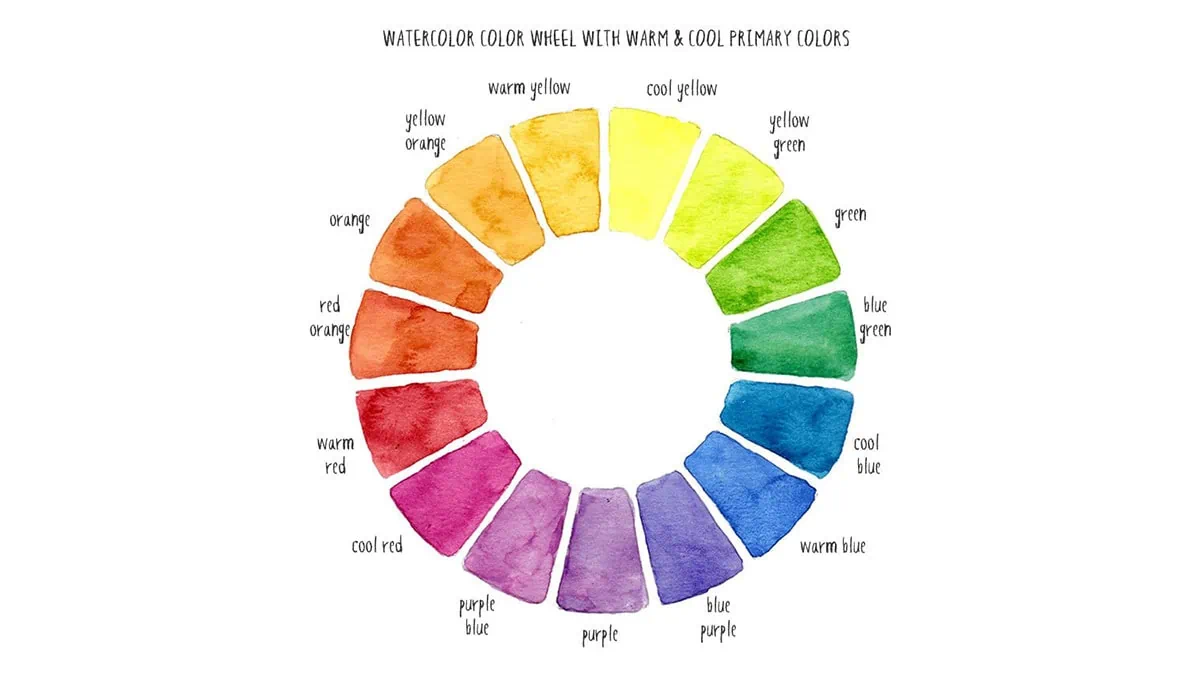
The whole concept of color theory may sound a bit tiresome, but trust me, when you get a hold of it, you’ll feel like a magician!
You can pull your palette out and blend colors to form new and exciting colors!
Rather than buying new colors and going through the hassle of finding their hues, you can just go through the color theory and blend old colors into new shades.
Fun fact: primary colors are the best watercolor paint for beginners.
Primary colors combine to create secondary colors, and these two categories can be combined to create tertiary colors.
Take a look at the color mixing formula:
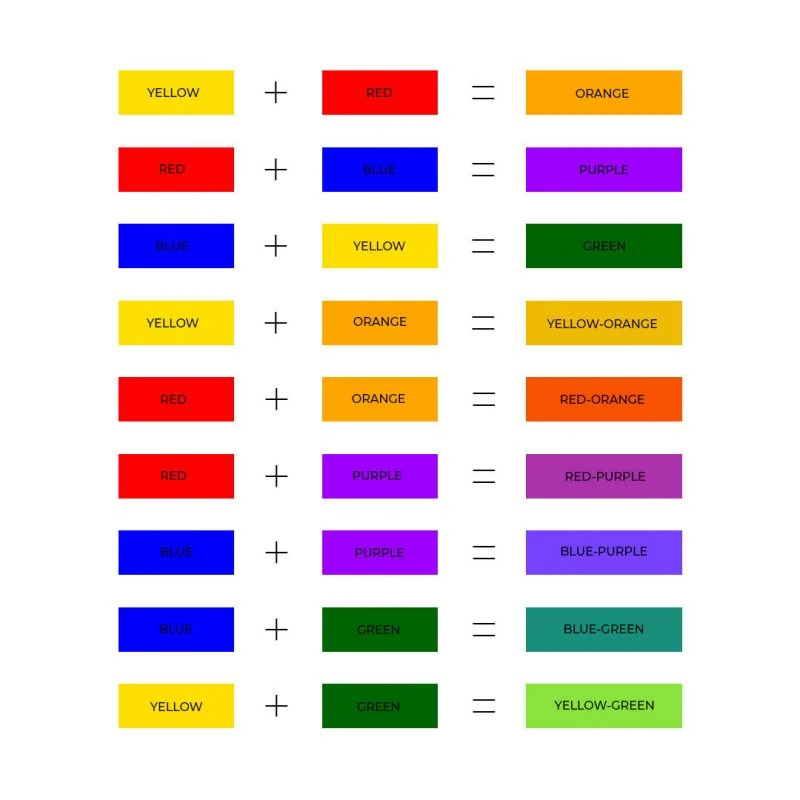
Also, you can change and play with the ratios of colors and experiment with your knowledge of color theory.
Suggested Article: Oil Paintings Tips
10. Water To Paint Ratio
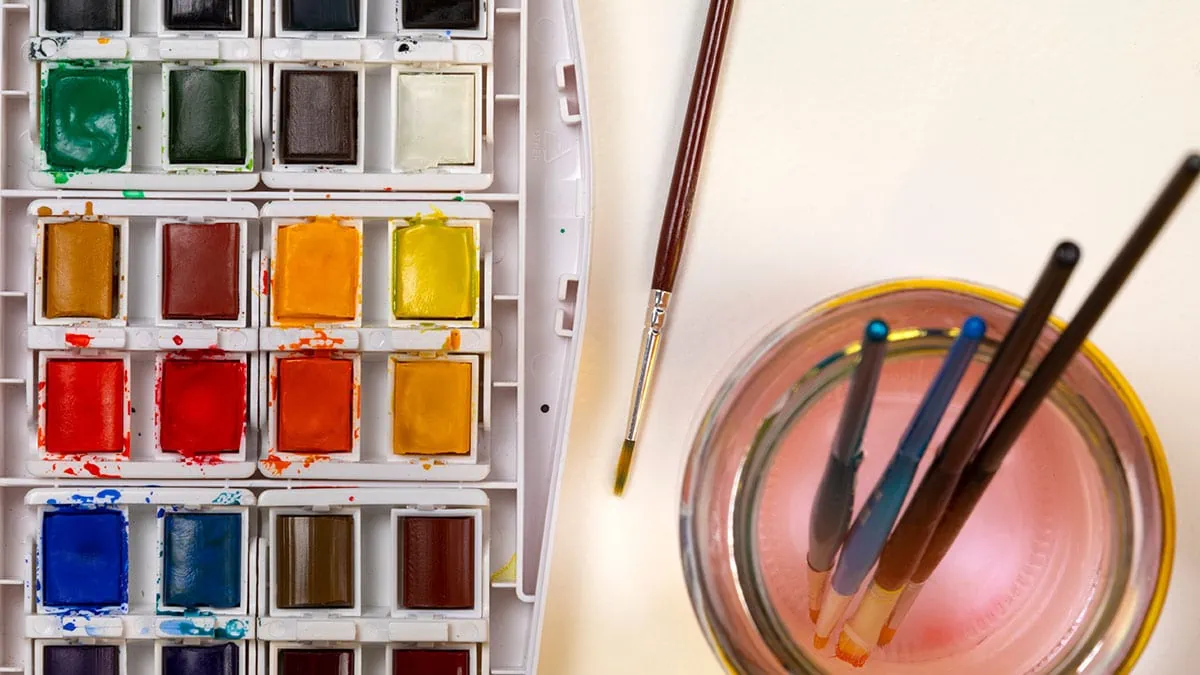
As a professional or beginner, the most important tip for watercolor painting is to find a balance between water and paint.
If you use less water in your paint, you will most likely get darker hues of the specific colors.
And if you use more water in your paint, you’ll get a flowy color that will take time to dry out and probably leave you with a difficult mess to cover.
11. Keep The Dry Time In Your Mind
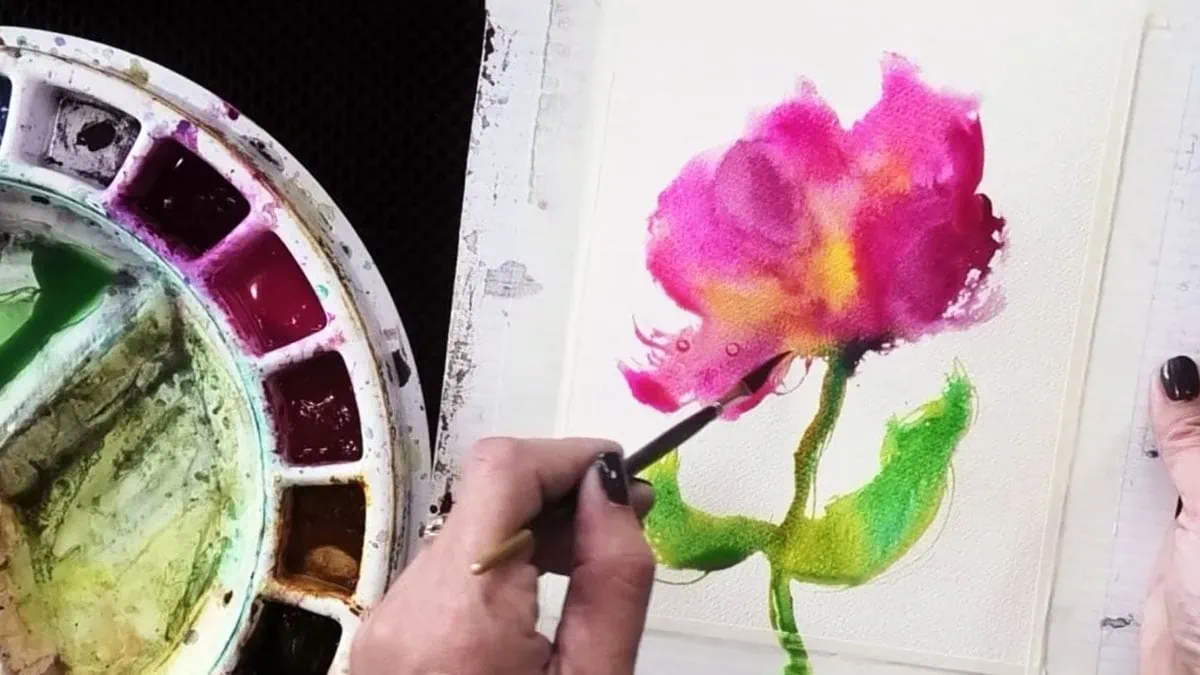
Wondering how to paint with watercolors? Keep your mind on the drying time!
That’s it, Yes, I said that! I said that because that is what mostly matters when it comes to working with watercolors.
As watercolors are flowy, they can get messier easily; hence, wait!
Wait and let the air do the rest, till then, you can take a break or have a KitKat and focus on these watercolor tips as well.
12. Push Brakes On Your Brush

An artist’s inspiration flows like a river!
But, but, but, don’t even think of hopping on this wild ride with watercolor paints.
The main reason for this is that watercolors have a flowy texture, and if not used with caution, they can flow and ruin your watercolor portrait.
So, be aware that you must apply brakes to your brush if you become overwhelmed by seeing the watercolors swirl!
13. Use The Right Pencils To Underdraw

It is an underrated watercolor tip, but you should always draw an outline before proceeding further with the watercolors.
Under-drawing is not necessary but it is advised as it helps you to mark a roadmap to your way in creating your phenomenal artwork.
Rather than using hard pencils, use soft pencils, which produce lighter strokes and get covered by the water paint easily.
14. Blow-dry Your Painting

A hairdresser’s best friend plays a vital role in creating artwork as well!
Exactly, that’s a blow dryer! While working with watercolors, you need to be patient, and if you can’t wait long enough, then.
Then you should probably use a blow dryer.
Fun fact: you can also create some cool color effects on your paintings using a blow-dryer.
15. Splatter, Salt, and Alcohol!

Want to take your watercolor painting to the next level by adding patterns to it?
Then you should try the splattering technique, in which you dip the brush in the paint and then, with the help of your index finger and thumb, splatter the color on your drawing paper.
You can also use salt and an alcohol solution in your painting to obtain creative patterns.
16. Constant Color Harmony

A palette full of vibrant colors and five different brushes—definitely sounds fantastic.
But when it comes to using watercolors as a beginner, if you use the various colors in your palette, then you’ll probably end up with a ruined and messy painting.
A professional painter advised beginners not to rush into the paint. Primarily, choose three colors and stick to them.
And as you get a hold of experimenting with the three colors, you can expand your color choices and move freely.
These watercolor tips for beginners can definitely help you in the long run!
Writer’s Tip: You can even create compilation watercolor portraits using these techniques.
17. Don’t Take Stress, It’s Okay To Make Mistakes

Don’t be concerned about making mistakes; we’re all human, after all!
There’s no need to panic if you make a mistake while painting! You can either wash it off or wipe the excess paint off.
And to commence your painting journey, start by drawing easy watercolor paintings first.
PS: Fun fact! Most of the famous paintings made their way to fame through mistakes!
Our mistakes tell us that we are still learning and are on the right path toward improvement.
You can also have the no-mistake way. How about a watercolor portrait from a professional?
You can now go for the best handmade paintings that also include parent and child watercolor portraits, giving you the most amazing art delivered to your doorstep!
So, This Was It, Aesthetes !
Watercolor paintings can be daunting, but by following these tips, you can change your daunting experience into something flaunting!
From creating a simple watercolor painting to a watercolor portrait, all you need is dedication, supplies, and snacks! (because, why not?)
Creating any art requires a skill, which indeed comes with a lot of practice and also requires a lot of effort from your side.
So, with this, I hope that you will follow these watercolor painting tips for beginners
to create artwork that showcases your creativity.
Author’s Note
This was it from my side; thank you for staying till the end, folks!
I’ve done my research and written this article so that people like you who actually want to start watercolor painting can follow these tips for watercolor painting and practice them.
Also, when it comes to watercolor paintings, we at PortraitFlip do some incredible work transforming images into paintings.
We also have a dedicated gallery where you can find all our watercolor paintings and artwork! Make sure to check that out as well.
It would be great if you guys would show some love to us by sharing this blog and commenting with your valuable feedback as well.
Also, we are active on our sassy social media channels like Instagram, YouTube, Pinterest, um, our website!
FAQs
Due to it’s texture and consistency over a canvas, It becomes hard to paint with watercolors. They are flowy in nature which makes it risky to work with.
To make a perfect watercolor painting you need to follow these four primary elements or known as the primary pillars of watercolor, and they are color, shape, value and edges.
Yes, absolutely, like every other artist you can too learn watercolor painting. You can refer to our blog to learn the basics and then move ahead with practicing it and improvising it more.







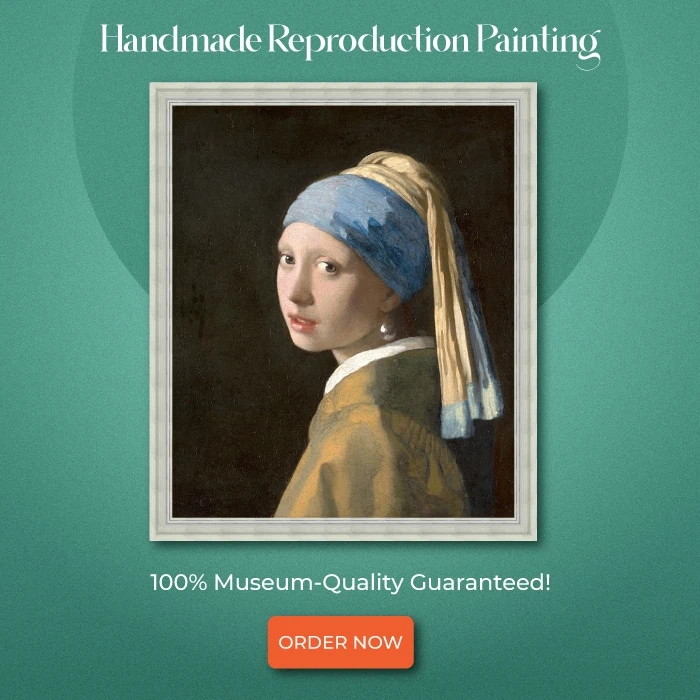
Usually I do not read post on blogs, but I would
like to say that this write-up very pressured me to try and do so!
Your writing style has been amazed me. Thanks, quite great article.